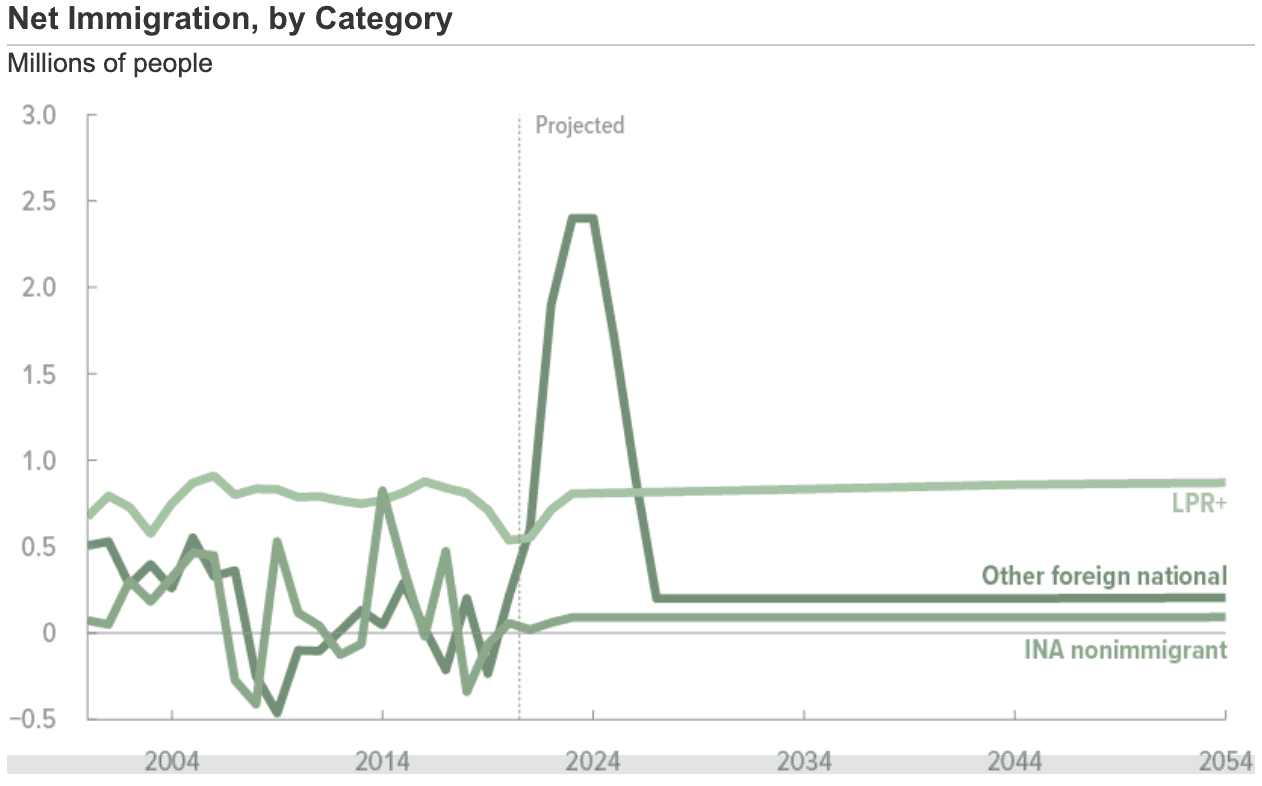The Daily Dish
January 24, 2024
Crises, Interconnected
Recent polls indicate that immigration has replaced inflation as the top issue on voters’ minds. The Congressional Budget Office (CBO) recently released a paper that succinctly explains why, although that was hardly its purpose. The paper in question is “The Demographic Outlook: 2024-2054,” which is a piece of the foundation of its short and long-term budget projections. The paper goes through the CBO’s thinking on the components of population growth – fertility, mortality, net immigration – but the key insight at the moment is in the graph below, which is reproduced from the CBO study.
What jumps right out is the skyrocketing “Other foreign national” category during the Biden Administration. The CBO breaks down the three categories of net immigration as:
- Lawful permanent residents (LPRs), plus those eligible to become LPRs (e.g., asylees or refugees), labeled LPR+;
- Students, temporary workers, and other nonimmigrants under the Immigration and Nationality Act (INA) and cleverly labeled INA nonimmigrant; and
- The rest – labeled “Other foreign national” (OFN) – which includes those here illegally and those permitted to enter using parole or other authority and may be waiting for their case to be adjudicated.
Regardless of the particulars of the label, the surge in OFNs is up to 2 million people per year over the past two years. It has been clear that something important is happening at the southern border, and one might have guessed that flows were up substantially (say, 250,000 or 500,000) but 2 million is a big number.
It also dovetails nicely with recent growth in the labor force of 2.6 million and 2.5 million in 2022 and 2023, respectively. With this growth, the labor force growth rate rose by 0.5 percentage points. When combined with a surge in productivity growth, this supply-side expansion permitted inflation pressures to ease without a dramatic loss in output growth.
So, there you have it. The way to solve an inflation crisis is to endure an immigration crisis. Of course, one can run the experiment in reverse (as would presidential candidate Trump) and cut off immigration. The result would be much, much slower labor force growth and a return to the sharp tradeoff between inflation pressures and the outlook for growth.
Fact of the Day
As of January 17, the Fed’s assets stood at $7.7 trillion.











